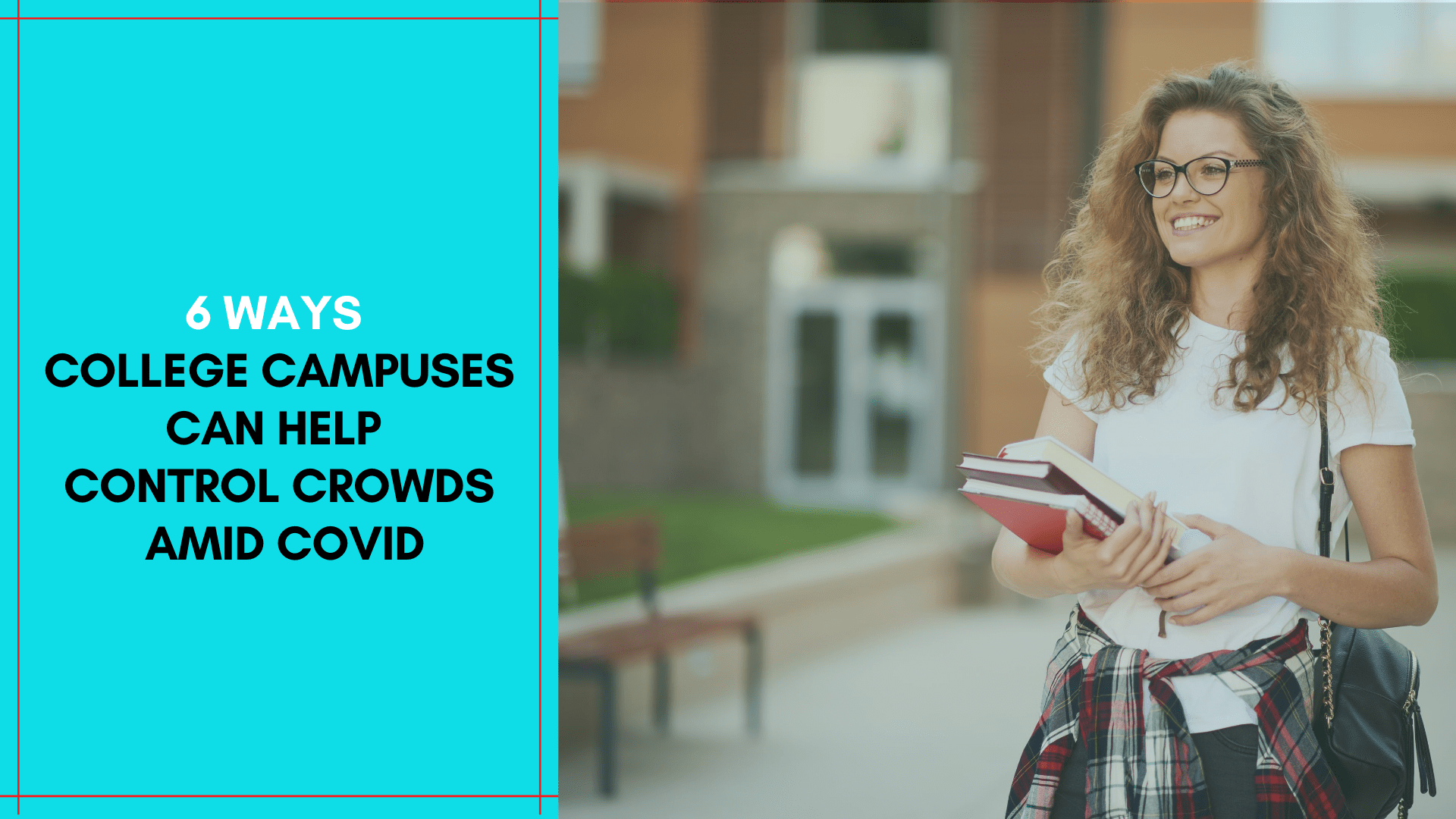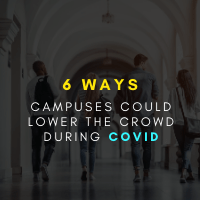
The coronavirus pandemic has greatly affected a wide range of industries across the USA, but colleges and universities may be some of the hardest hit. Traditionally, students pay tuition fees not only for their education and the hands-on classroom settings, but also for the on-campus experience of socialization found at college sporting events, rallies, parties, fraternities and sororities, and more. The demand for social distancing has forced many educational institutions to radically switch all of their programs to online classes and close campuses. Fall re-openings and enrollment numbers are still issues that will need to be overcome. Maintaining the draw for on-campus learning institutions over less costly online universities will be a challenge, but new technologies, learning delivery methods, and fresh policies can help them tackle this pandemic.
Article Contents
1. Update the Applications and Admissions Processes

Students who were excited to be accepted to their college of choice earlier this year are being faced with the question of whether to take a break or continue their education. Other students are reconsidering whether it is worth it to pay the extra money in tuition for on-campus institutions who have just started offering online classes rather than attending an online university with a proven track record. Making the applications and admissions process easier with updated methods can certainly add to the appeal for many students. Receiving your degree from a college or university with a strong reputation is still a major draw. Many higher education institutions are updating their processes with online applications. Additional admissions processes can also be conducted on a one-on-one basis with admissions staff through scheduled appointments. This can still be instituted, with social distancing measures in place, for students who need to showcase a physical portfolio and undergo an interview process.
2. Move to Virtual Advising

Many in-person meetings and advising sessions are vital to student success and cannot be done away with, which is why moving some of these processes to a video conference or call is something several different departments need to consider. It is vitally important that academic advisors remain available and accessible to students during their entire enrollment at college. It’s easy for students to sign up for the wrong classes that don’t complete their degree requirements, leading to the need to sign up for additional classes, lengthen their enrollment, and pay extra tuition. This can cause students to become discouraged and drop out. Utilizing virtual meetings through apps, like Zoom and Skype, can be even more convenient for students as they bring the college staff straight to their cell phones and laptops wherever they happen to be.
3. Utilise Mobile Queues and Notifications

Traditionally, financial aid and academic advisor offices, as well as mail rooms and on-campus health centers grow long lines of students who need various forms of assistance. While it’s optimal to move many of these online, it’s not always the best option. Thankfully there are other alternatives that will do away with crowded lobbies and waiting rooms. Universities can opt to use campus appointment scheduling apps and online queue management software to remove the interaction between students so that these offices and spaces no longer have lines of students seeking help. Staff can also focus their attention more directly on one student at a time and not become overwhelmed with managing a waiting area. Plus, students no longer have to wait and waste time they could be using for studying and classwork.
4. Offer Online and Hybrid Classes

As we mentioned earlier, colleges and universities have been forced to close their campuses and quickly switch all of their classes to purely online options. While most have accomplished this extremely efficiently in a short amount of time, it still raises the question of how their classes will be offered for this coming fall and whether they can keep their student enrollment up. The country is trying to re-open in many states, while still keeping social distancing efforts in mind. Some of the options colleges are considering include creating hybrid classes that offer a mix of online and in-person learning. Professors could offer in-classroom learning to half of the class on one day, and the other half on the next day, with proper sanitizing and cleaning efforts from staff in between.
5. Lower Student to Teacher Ratios

While online learning is a great option for many degree focuses, it’s not the best method of learning for those seeking degrees in the areas of the arts and certain sciences. New structuring of classes would have much smaller student-to-teacher ratios and include wider spacing in classrooms for in-person learning. Creating smaller classes of students gives teachers more ability to offer personalized help to each student, which could be a big draw for universities who are trying to gain an edge over online counterparts. Students would still receive the intimate campus experience they are seeking while being able to safely keep their distance. Students are unique and learn in different ways, so forcing all students to adopt purely online classes could be detrimental to some and inhibit their learning experience.
6. Encourage Off-Campus Social Distancing

Colleges have a ton of control over crowds when it comes to on-campus activities, but controlling students who naturally want to gather and enjoy their college experience with each other through parties and events off-campus is another animal altogether. Pictures of frat house parties have surfaced on the web of students in close proximity and not wearing masks. So far, many college authorities have issued warnings and cited people for normal things like alcohol, but not much has been lawfully enforced in the way of social distancing. This gentle approach may well be the best method for handling these situations. A heavy-handed approach could cause a backlash and higher dropout rates. Campus security should still continue to be vigilant at issuing warnings and curbing the crowds during this time. With this approach, gatherings will hopefully be kept to a minimum, and with smaller numbers of students than seen in the past.
Changes for Posterity
Closed campuses during COVID-19 will no doubt hurt the marketing efforts of colleges and universities when trying to attract new students. Open houses and admitted student days that once offered a peek into the college experience are temporarily shut down. While colleges can still offer tons of webinars on the subject that cut out the on-site crowds, the effect on marketing is still taking a drastic hit. One thing is for sure as this pandemic progresses, and that is colleges will need to adapt their strategies, policies, and processes for the uncertain times ahead. The positive effect is that universities are being forced to try out new technologies and methods that may very well offer better and more effective approaches. The expectation is that many of the new processes will continue to endure into the future, making admissions, financial aid applications, academic advising, and learning experiences easier, less crowded, and more efficient for students and staff for years to come.
Authors Bio
Tiffany Young is a freelance writer, content strategist, and former graduate assistant. She frequently covers developments in teaching, public policy, standardized testing, educational technology, and software that helps schools and universities.


